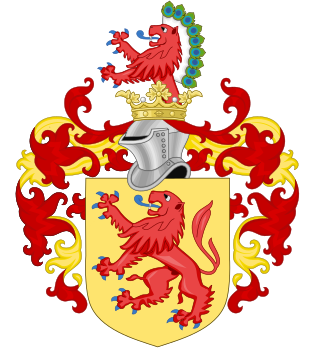
The House of Habsburg, also known as the House of Austria, is one of the most prominent and important dynasties in European history.
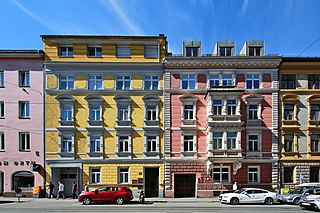
Innsbruck is the capital of Tyrol and the fifth-largest city in Austria. On the River Inn, at its junction with the Wipp Valley, which provides access to the Brenner Pass 30 km (19 mi) to the south, it had a population of 132,493 in 2018.

Johann Carl Bodmer was a Swiss-French printmaker, etcher, lithographer, zinc engraver, draughtsman, painter, illustrator, and hunter. Known as Karl Bodmer in literature and paintings, his name was recorded as Johann Karl Bodmer and Jean-Charles Bodmer, respectively. After 1843, likely as a result of the birth of his son Charles-Henry Barbizon, he began to sign his works K Bodmer.

Maximilian I Joseph was Duke of Zweibrücken from 1795 to 1799, prince-elector of Bavaria from 1799 to 1806, then King of Bavaria from 1806 to 1825. He was a member of the House of Palatinate-Birkenfeld-Zweibrücken, a branch of the House of Wittelsbach.
Events in the year 1827 in Art.

The emperor of Austria was the ruler of the Austrian Empire and later the Austro-Hungarian Empire. The hereditary imperial title and office was proclaimed in 1804 by Francis II, Holy Roman Emperor, a member of the House of Habsburg-Lorraine, and continually held by him and his heirs until Charles I relinquished power in 1918.

Albert III of Austria (9 September 1349 – 29 August 1395), known as Albert with the Braid (Pigtail) (German: Albrecht mit dem Zopf), a member of the House of Habsburg, was Duke of Austria from 1365 until his death.
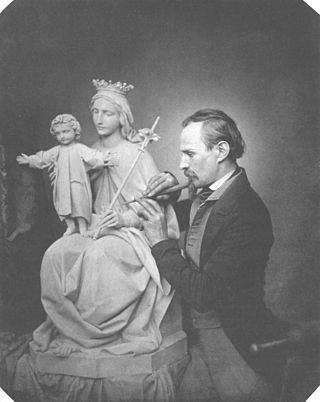
Joseph Knabl was an Austrian sculptor who specialized in religious statuary.

The Republic of German-Austria was an unrecognised state that was created following World War I as an initial rump state for areas with a predominantly German-speaking and ethnic German population within what had been the Austro-Hungarian Empire, with plans for eventual unification with Germany. The territories covered an area of 118,311 km2 (45,680 sq mi), with 10.4 million inhabitants.
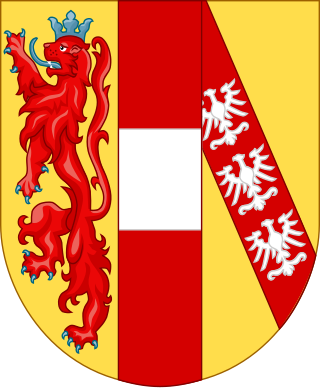
The House of Habsburg-Lorraine originated from the marriage in 1736 of Francis III, Duke of Lorraine and Bar, and Maria Theresa of Austria, later successively Queen of Bohemia, Queen of Hungary, Queen of Croatia and Archduchess of Austria. Its members are the legitimate surviving line of both the House of Habsburg and the House of Lorraine and inherit their patrimonial possessions from their female line of the House of Habsburg and from the male line of the House of Lorraine.

Ambras Castle is a Renaissance castle and palace located in the hills above Innsbruck, Austria. Ambras Castle is 632 metres (2,073 ft) above sea level. Considered one of the most popular tourist attractions of the Tyrol, Ambras Castle was built in the 16th century on the spot of an earlier 10th-century castle, which became the seat of power for the Counts of Andechs. The cultural and historical importance of the castle is closely connected with Archduke Ferdinand II (1529–1595) and served as his family's residence from 1567 to 1595. Ferdinand was one of history's most prominent collectors of art. The princely sovereign of Tyrol, son of Emperor Ferdinand I, ordered that the medieval fortress at Ambras be turned into a Renaissance castle as a gift for his wife Philippine Welser. The cultured humanist from the House of Habsburg accommodated his world-famous collections in a museum: the collections, still in the Lower Castle built specifically for that museum's purpose, make Ambras Castle one of the oldest museums in the world.
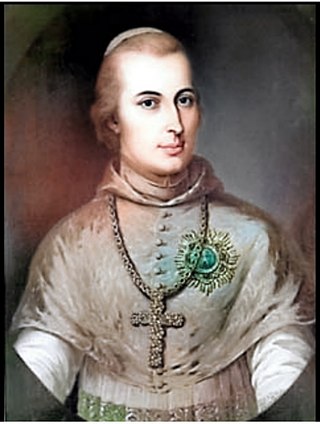
Archduke Karl Ambrosius Joseph Johann Baptist of Austria-Este was an Archbishop of Esztergom.
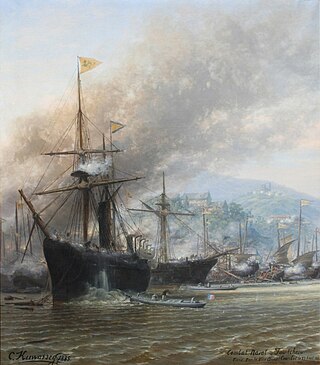
Charles Euphrasie Kuwasseg was a French painter of the 19th century. He essentially specialized in landscape paintings - particularly the coastal landscapes of Brittany and Normandy. His father, Karl Joseph Kuwasseg, was an Austrian born in Trieste on March 16, 1802, and also a renowned painter. His father left for Paris, and took French nationality. He died in Paris in January 1877.

The Battle of Verona was fought on 18 October 1805 between the French Army of Italy under the command of André Masséna and an Austrian army led by Archduke Charles, Duke of Teschen. By the end of the day, Massena seized a bridgehead on the east bank of the Adige River, driving back the defending troops under Josef Philipp Vukassovich. The action took place near the city of Verona in northern Italy during the War of the Third Coalition, part of the Napoleonic Wars.

Giovanni Pietro de Pomis was an Italian painter, medailleur, architect and fortress master builder. His works show a marked influence of late-Mannerism.

The Battle of Graz took place on 24–26 June 1809 between an Austrian corps commanded by Ignaz Gyulai and a French division led by Jean-Baptiste Broussier. The French were soon reinforced by a corps under Auguste Marmont. The battle is considered a French victory though Gyulai was successful in getting supplies to the Austrian garrison of Graz before the two French forces drove him away from the city. Graz, Austria is located 145 kilometers south-southwest of Vienna at the intersection of the modern A2 and A9 highways.

Louis Mayer, born Ludwig Hartmann Mayer, was a German landscape painter and brother to the poet Karl Mayer.
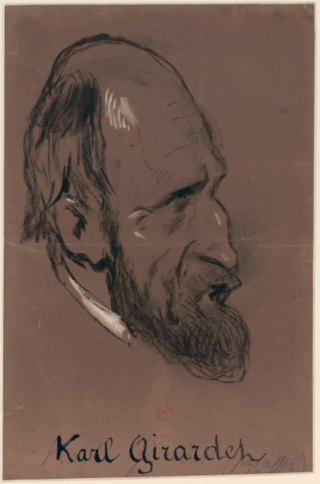
Karl Girardet was a Swiss painter and illustrator, who lived and worked mostly in Paris. After beginning his career as a landscape painter, he became a renowned history painter as well as a confidant to King Louis Philippe I and an official court painter.

Ferdinand Runk, also known as Franz Ferdinand Runk, was a German-Austrian landscape painter, draftsman and etcher.
Leo von Littrow was an Austrian-Fiuman painter known for her landscapes and marine paintings.



















